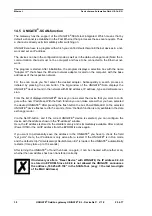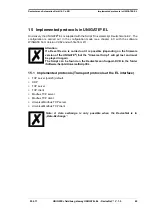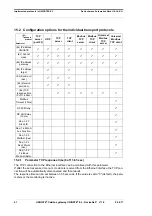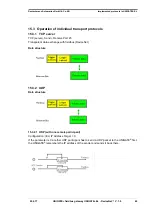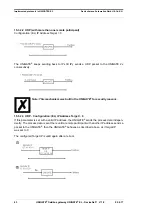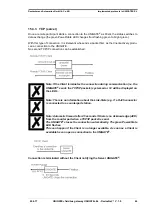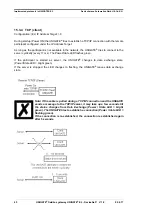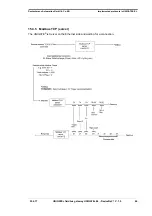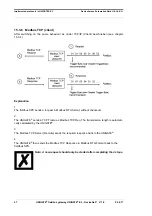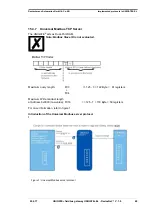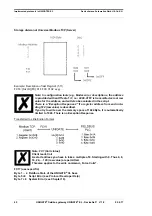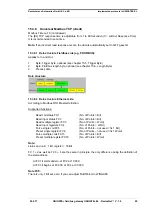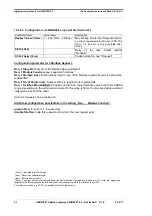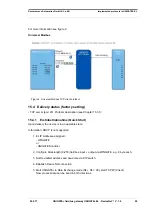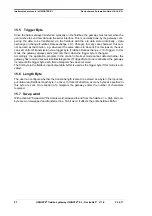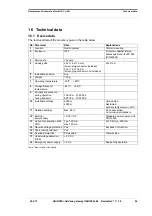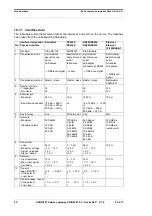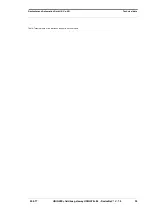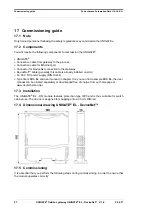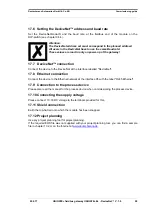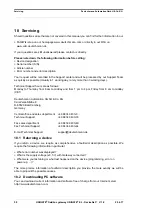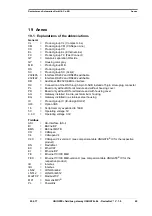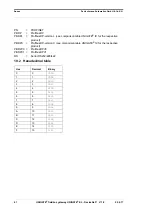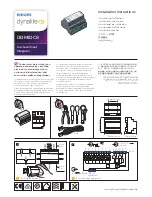
Implemented protocols in UNIGATE® EL
Deutschmann Automation GmbH & Co. KG
53
UNIGATE
®
fieldbus gateway UNIGATE
®
EL - DeviceNet
™
V. 1.0
22.6.17
15.5 Trigger Byte
Since the data is always transferred cyclically on the fieldbus, the gateway must detect when the
user wishes to send new data via the serial interface. This is normally done by the gateway com-
paring the data to be transferred via the fieldbus with the old data stored internally - data
exchange on change (Fieldbus Data exchange -> On Change). In many cases however, this can-
not be used as the criterion, e.g. whenever the same data is to be sent. For this reason, the user
can set control of transmission via a trigger byte (Fieldbus Data exchange -> On Trigger). In this
mode, the gateway always sends (and only then) when the trigger byte is changed.
Accordingly, the application program in the control in Normal mode cannot detect whether the
gateway has received several identical telegrams. If Trigger-Byte mode is activated, the gateway
increments the trigger byte each time a telegram has been received.
The first byte in the fieldbus input/output data buffer is used as the trigger byte if this mode is acti-
vated.
15.6 Length Byte
The user can configure whether the transmit length is also to be stored as a byte in the input/out-
put data area (Fieldbus length byte -> active). In transmit direction, as many bytes as specified in
this byte are sent. On reception of a telegram the gateway enters the number of characters
received.
15.7 Swap word
With activated "Swap word" the data is word-swapped to and from the fieldbus. I.e. High and Low
byte are word-swapped and transferred in a 16-bit word. It affects the entire fieldbus Buffer.

